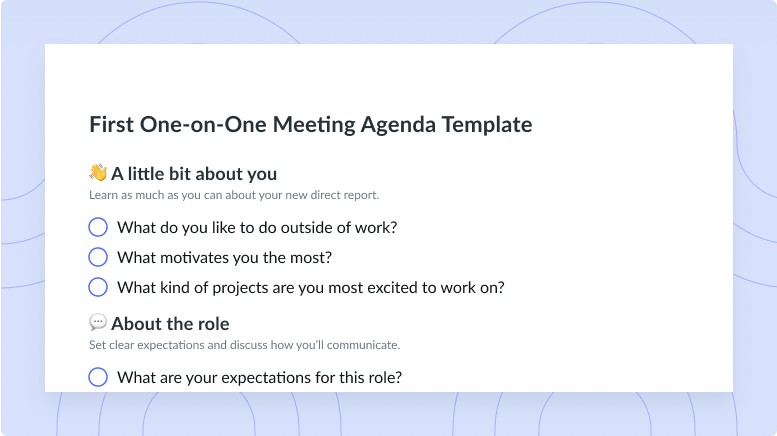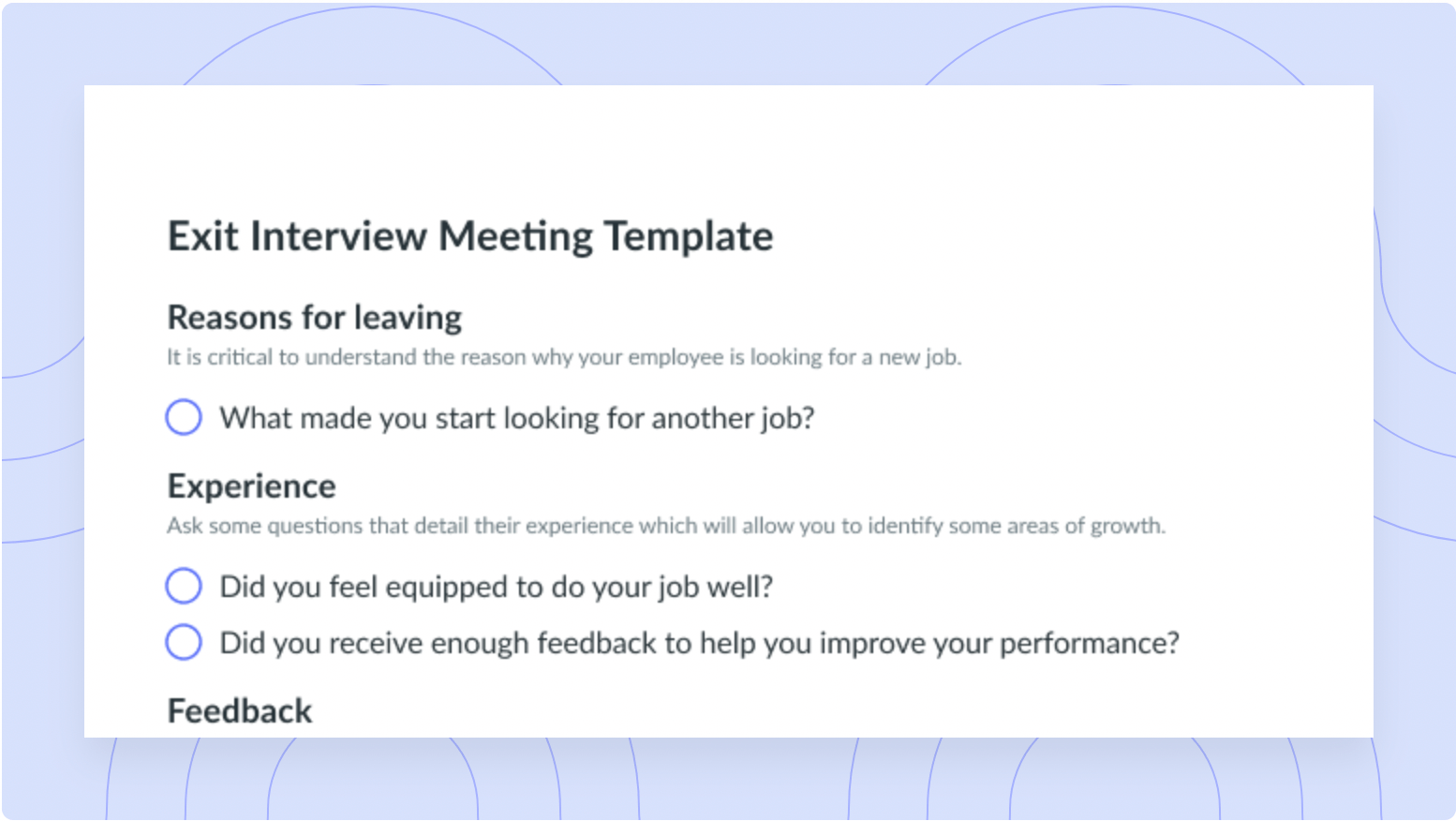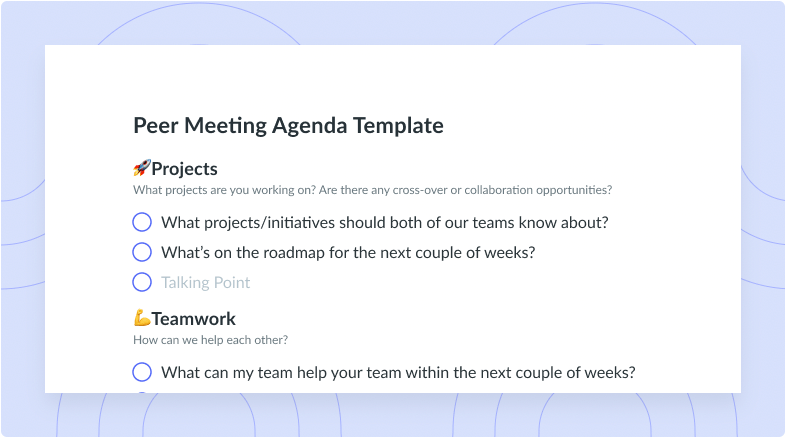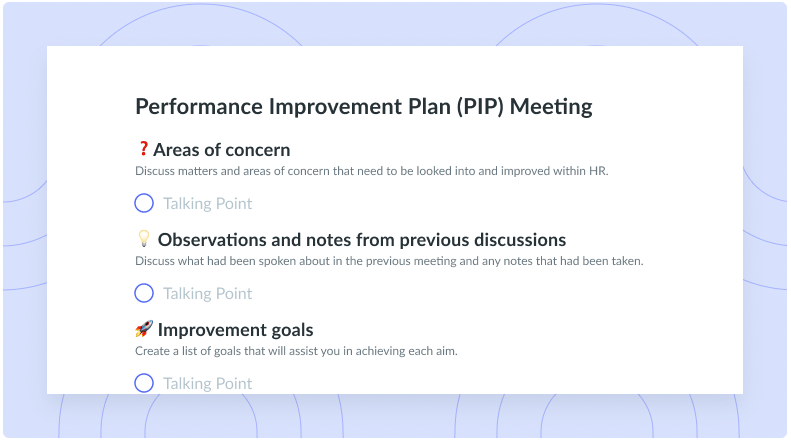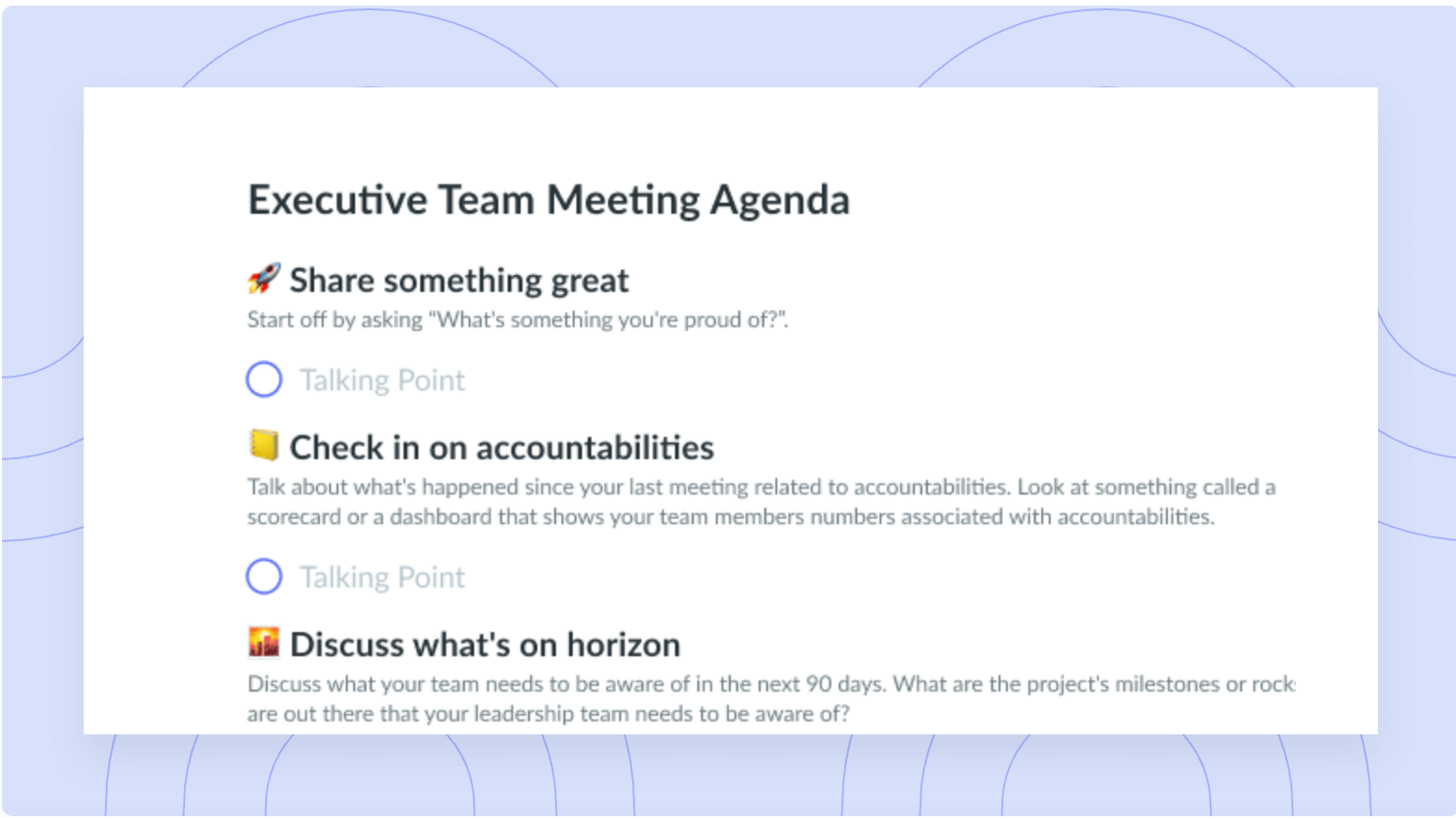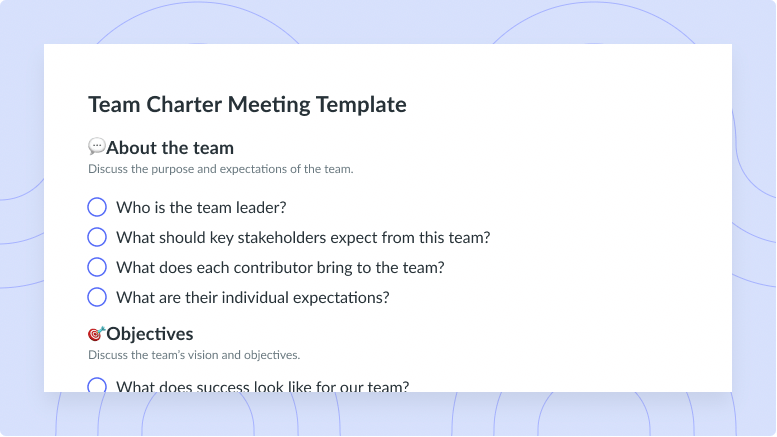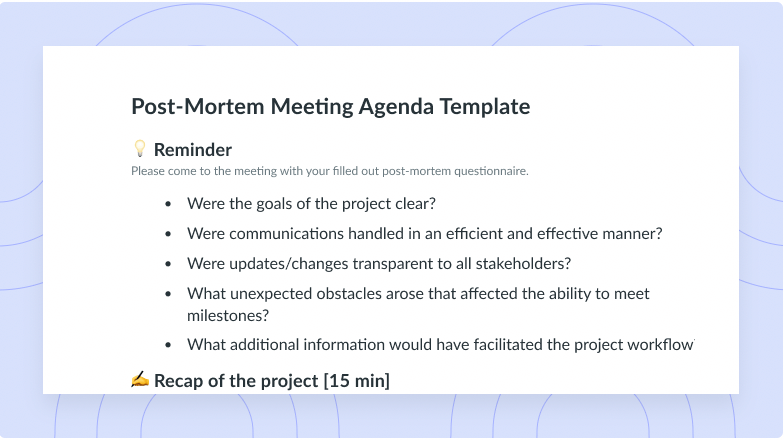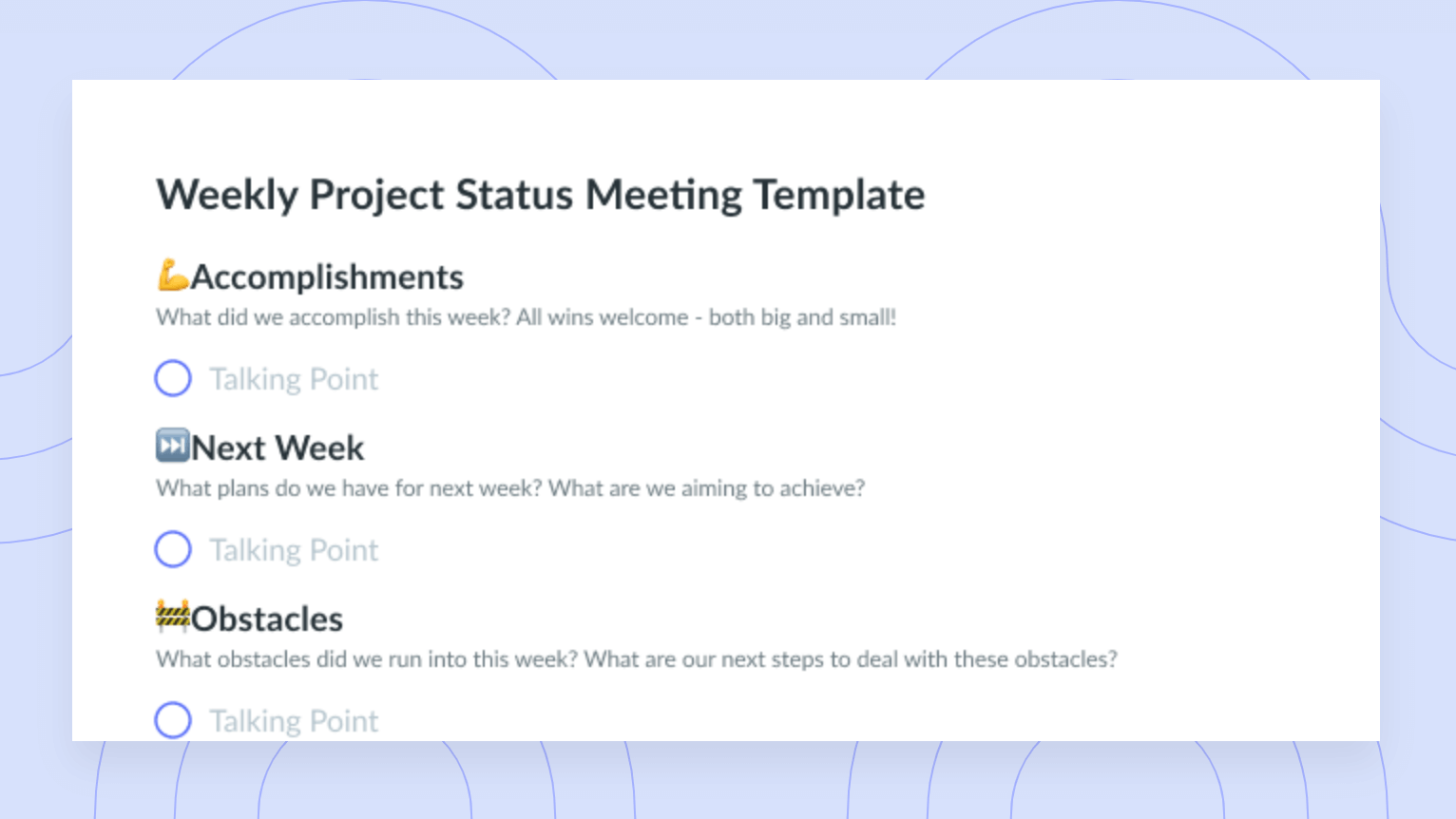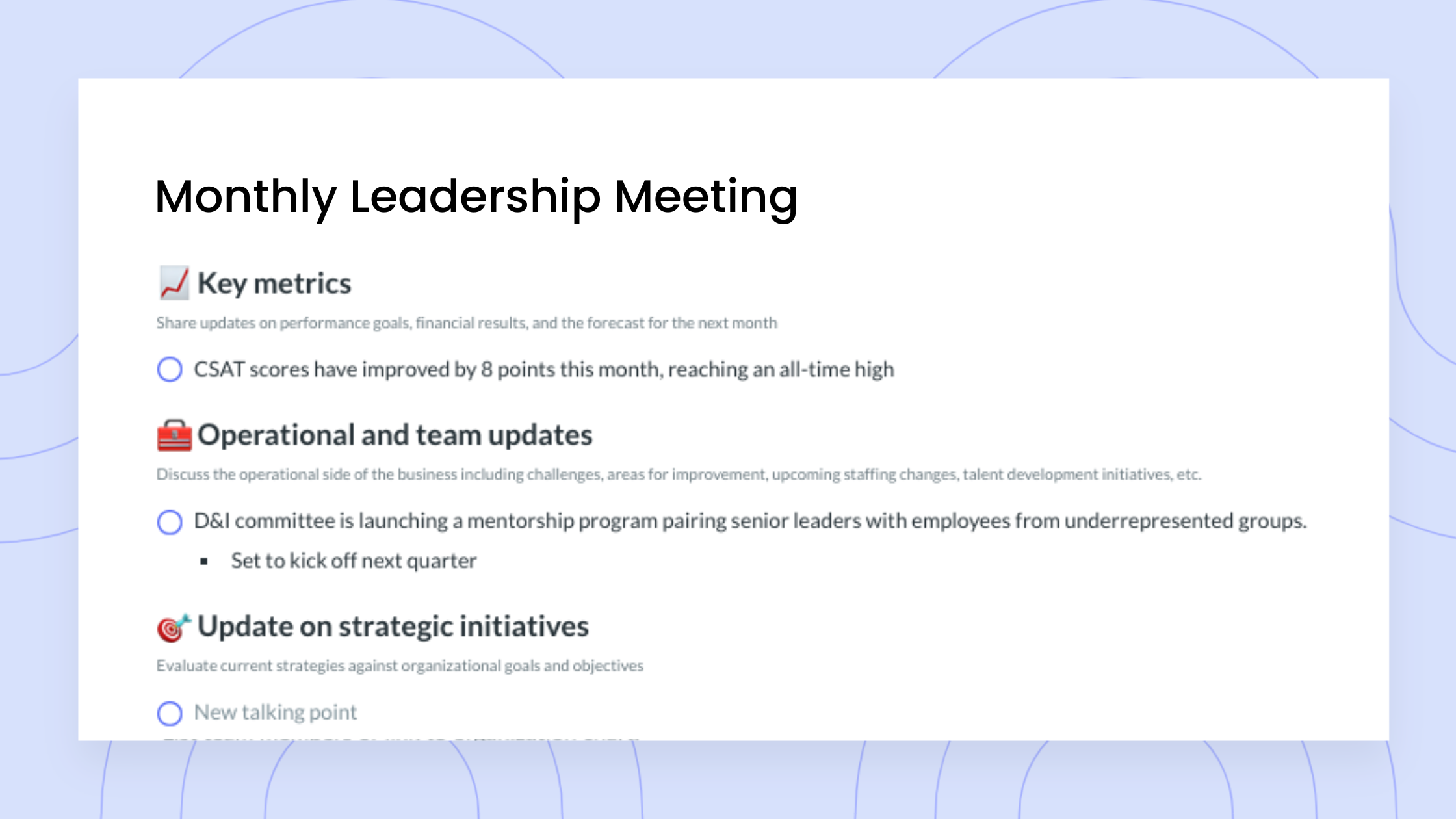5 Ways to Build Accountability in the Workplace
Best practices to communicate expectations, document goals, and build a culture where employees are held accountable for their work.
What is Workplace Accountability?
The notion of workplace accountability is becoming a popular topic of conversation amongst leaders. The hype around workplace accountability is likely due to the positive impact it is having on organizations, once it is clearly defined and put into action.
The Oxford English dictionary defines accountability as,
“The fact of being responsible for your decisions or actions and expected to explain them when you are asked.”
Workplace accountability is simply this, applied in the workplace. In other words, it is when employees are being held responsible for their specific tasks or duties. These expectations are common knowledge and are widely understood throughout the group. When the team is aware of the responsibilities of their counterparts, they can support one another in accomplishing their specific duties, while holding each other accountable as well.
Why is accountability important?
Without workplace accountability, it is very difficult to take ownership and keep track of our tasks, because we aren’t being held responsible. As Eran Aloni, COO of Gong, said in the Supermanagers podcast:
“If people don’t feel accountable, they can’t learn. If it’s not my responsibility, and it’s not my fault, or it’s not something that I have done that caused this to fail, then I would not drive myself to try and do better next time because it’s not my problem. It was not something that I was accountable for.”
To address accountability in the remote workplace, Fellow has outlined 5 best practices to keep yourself and your team accountable. The majority of businesses have been and will continue to work from home and so it is important for us to adapt to our new mode of productivity as best as possible.
5 Best practices to create accountability in the workplace:
- Communicate Expectations
- Document Specific Goals
- Evaluate your Teammates’ Progress
- Provide Opportunities for Improvement
- Incorporate Workplace Accountability
1 Communicate expectations
In order to effectively define expectations, it is essential to have continuous communication with your team members. Staying in touch with your employees often shows your employees that you are there to support them, even if it is from afar. Instant messaging systems are a great option to keep the conversation going with your team. This ongoing communication will help to bridge the distance while you are working from home. Continuous and clear communication is also essential to defining goals, responsibilities and expectations with your team.
Expectations of each person within the team should be common knowledge so that the group can count on one another to keep each other focused and aligned for the success of the project. As stated in TechRepublic’s recent article about effective remote work policies, employees need to have their responsibilities clearly communicated to them to execute the task at hand:
“Unspoken rules can create confusion. To set employees up for success, they need to understand what their expectations are — whether they are working in or out of the office.”
If circumstances have recently changed to a remote method of working, it is important to note that as a leader, you may need to reset your expectations for your team while you all become accustomed to working from home.
To foster ongoing communications with your team, be sure to schedule meetings accordingly. Fellow has a large variety of meeting templates that you can use to make the most of your time while leading your team from home.
2 Document specific goals
As a manager, you already know that tasks or responsibilities are much easier to track once they’re on paper (in the 21st century, this means documented digitally…). The same goes for goal-setting with your employees.
According to Gallup, managers need to take time to set goals with their employees if they want their team to succeed:
“Once employees clearly understand what they’re accountable for, managers should help them set measurable, individualized goals that align with their individual role. Most, if not all, employees should have metrics defined that help them know if they’re delivering on the organization’s goals.“
The foundation for documenting specific goals and promoting workplace accountability is ongoing communication with your employees. It’s impossible to manage what you can’t measure, and setting clear-cut goals will bring both you and your employees peace of mind.
Taking the time to set goals with your employees creates cohesion within your group, making it overt that you are working towards the bigger picture together, and that you are there to support your team in attaining its goals (even if it means virtually). Ultimately, setting goals eliminates confusion and allows the team to work full-speed-ahead towards collective success.
An effective way of documenting your team’s goals is to set priorities for the task at hand. Even more specifically, use an objectives and key results (OKRs) meeting template to set actionable and measurable goals with your direct reports.
3 Evaluate your teammates’ progress
Setting goals is great – but it is impossible to establish accountability in the workplace without evaluating the progress of your team. Feedback is the backbone of evaluating progress in the workplace. Your employees’ feedback on where they are in realizing their goals is just as important as your feedback on the means of attaining those goals. Where there is always room to learn and to grow, make sure that you put a focus on positive reinforcement and motivating your employees to keep moving towards their goals.
One of the best ways to motivate your employees is to praise them for a job well done, leaving individuals to feel the positive impact of their work. Gallup highlights through their analytics on accountability in the workplace that although there are many channels of feedback, ongoing one-on-one discussions with your direct-reports are absolutely essential:
“Feedback can come from customer or employee surveys, ongoing project updates, key listening posts with critical stakeholders, or some combination of these. The most effective form of feedback, however, comes from frequent conversations between managers and employees.”
Bring your team together by reminding everyone that you are all working towards a common goal. You are there to support one another, in whichever way that you can. Check out our article on how great managers give and receive feedback for tips and best practices.
Pro Tip
Feedback is not exclusively for managers to deliver to their employees. Encourage your group to provide feedback to one another as well. Giving and receiving feedback is a means to support one another and to come together for the wellbeing of the project at hand. Having an openness to feedback means that your team is constantly learning and growing.
4 Provide opportunities for improvement
It is important that you make it clear to your employees that you have a genuine interest and willingness in supporting their professional development. Knowing that you are investing time in your employees success is going to motivate them to continue learning and growing, making them even more of an asset to the organization. A major contributing factor to accountability in the workplace is you, as a manager, investing in your employees development. In doing so, you and the team as a whole will certainly reap the benefits as you continue to grow by acquiring new knowledge and adapting best practices.
According to Gallup, providing opportunities for improvement to your employees makes you a more attractive employer:
“Gallup analytics show that millennials rank the opportunity to learn and grow in a job No. 1 — above all other job considerations — and it’s high on the ranks for other generations as well.”
You may be questioning how to foster these opportunities for your employees while working remotely, though there are so many online learning platforms available. Offering some one-on-one time with each of your employees with regards to their growth will be valuable in understanding their learning approach and areas in which they would like to acquire more knowledge. Having a personal relationship with your employees will also build trust and foster open communication.
Harvard Business Review shares in a recent article that knowing your employees personally builds trust, and therefore, accountability in the workplace:
“Nurture familiarity between you and your team. Building trust and familiarity with your direct reports requires you get to know them on a personal level.“
5 Incorporate workplace accountability into the company culture
The first 4 best practices lead to the ultimate goal, of actually incorporating workplace accountability into your company culture. First and foremost, it is important that you hold yourself accountable. Take ownership for your own actions and lead by example. Where there are mistakes and short-comings, make it clear to your employees that we are all human and that each obstacle or bump in the road serves as a learning opportunity, helping to build resilience and bring the team closer together.
As David Cancel, CEO of Drift said in the Supermanagers podcast:
“There are many ways in which we make it known that it’s okay to fail,” said David Cancel. “For us, failure is not an issue. The issue is if we don’t learn from it.”
Personal accountability is contagious and so take the opportunity to exemplify this with your group. Furthermore, treating your employees with respect will make them much more likely to commit to their role and to the rest of the team. Forbes explains that as we come to embrace accountability, our teams will become more engaged:
“Victim mindsets don’t lead to success. But once our teams can learn to embrace personal accountability, increased engagement and happiness is sure to follow.”
Workplace accountability starts with open and clear communication. Once you master frequent communications with your team, make sure that you are taking the time to document specific and attainable goals. Check-in with these goals and evaluate where you are in realizing them. What might you need to change in order to attain them? What is working and what needs to be adjusted? Provide opportunities for improvement for your employees by investing your time in their growth and success. Lastly, welcome and provide feedback, reinstating the importance of open communication. Here are more valuable insights on how to weave feedback into your team’s DNA.
In applying these best practices to your team and making them a constant in the way that you manage people and projects, accountability in the workplace will become etched in your company culture.


![12 Ways to Inspire Creativity in the Workplace [+ FREE Templates]](https://fellow.app/wp-content/uploads/2022/06/Inspiring-Creativity-in-the-Workplace-2.jpg)

![12 Thoughtful Ways to Support Your Team [+ Free Template]](https://fellow.app/wp-content/uploads/2022/04/Ways-to-support-your-team-2.jpg)

![Helpful Advice for CTOs [Approved by Experts!]](https://fellow.app/wp-content/uploads/2022/10/Helpful-Advice-for-CTO.jpg)


